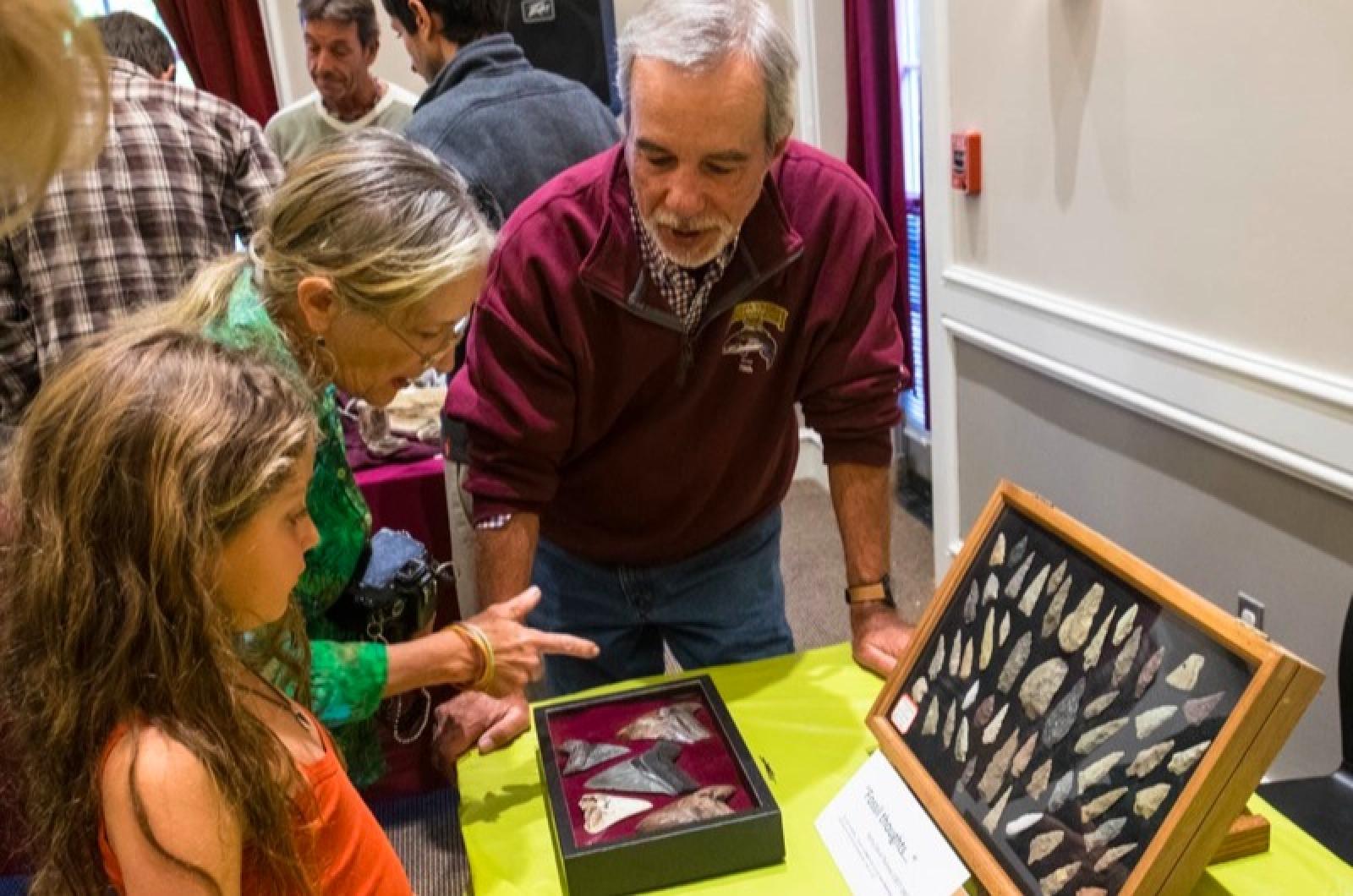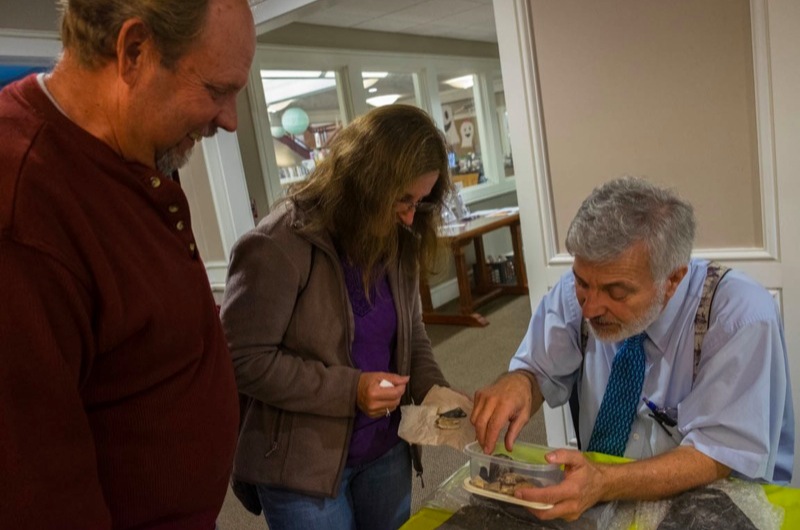For Islanders, at least, fossils never get old.
The sixth annual National Fossil Day Thursday drew people of all ages to the Oak Bluffs Public Library to marvel at ancient plants and animals preserved for millions of years in stone.
In one part of the library, kids gathered around tables to sort through bins of dusty grey fossils from a quarry in Ontario — each one bearing the shape of a marine animal that lived more than 400 million years ago. The quarry provided the stones free of charge to the Marine and Paleobiological Institute, which organizes the annual event and other educational programs on the Island.
“The brachiopods are nice because they tend to fossilize whole, so you can really see the organism,” said Wendy Culbert, a marine ecologist by training who now does botanical work on the Island. The small, round mollusks resembled some sort of confection one might find on a coffee table.
Other specimens only hinted at their ancient forms — the curve of a nautilus shell or a fragment from a trilobite, whose relative the horseshoe crab still roams the oceans and is among the oldest living species on Earth.
An adjacent room was buzzing with activity as dozens of people pored over collections that included starfish, petrified wood, prehistoric shark teeth, and other objects. Most of the items formed millions of years ago when organic matter was buried in the earth and replaced by minerals in groundwater.
Brothers Sam and Jacob Gurney, ages 11 and 14, deftly answered questions about their collection of shark teeth and other fossils, many of which they found at Lucy Vincent beach. Sam was especially fond of a whale vertebra encrusted with minerals the color of sand and clay. “It was the best find I ever had,” he said.
“Here you can really only find plant fossils, shark teeth, and sometimes you can find mosasaurs,” said Jacob, referring to the large marine reptiles that lived more than 65 million years ago. Major storms often bring fossils down from the cliffs at Lucy Vincent, he said, although erosion has made them harder to find in recent years.
Fred Hotchkiss, founder of the Marine and Paleobiological Research Institute, an Island-based nonprofit aimed largely at teaching young people about fossils, sat at a small table in his trademark suspenders, greeting visitors and answering questions about fossilized starfish and other echinoderms from the institute’s collection.
Mr. Hotchkiss, paleobiologist and former Navy man with a Ph.D. from Yale University, has organized the annual events since 2011 and watched them grow every year. (Last year broke a record with 350 visitors.) Funding from the Martha’s Vineyard Cultural Council and the Staples Foundation have helped obtain specimens and maintain the institution’s Fossils in the Classroom project.
Other objects on Thursday included a deep-sea vent from the Woods Hole Oceanographic Institution — not exactly a fossil, although WHOI scientist Margaret Tivey also brought some tube-worm casings from around the vents, which form on the ocean floor, where hot fluid cycles through the crust. The vent on display resembled a hollow tree stump, with sparkling minerals inside.
Some visitors brought items of their own, including Connor Dunham, age 6, whose uncle had found a stone with white shell fossils in the mountains of South Dakota. “This is identifiable right away,” Connor said as he sat at his own table, turning the stone over in his hands and pointing out its features and imperfections. A handmade sign declared: “Older than the dinosaurs.”
Prehistorian Duncan Caldwell guided visitors through a display that included a progression of stone tools ranging from about 100,000 to 2.7 million years old, and a fossilized prehistoric water buffalo skull with horns spanning eight feet. The bust of Homo erectus, with its heavy brow and almost-human features, joined the skull for reference. The two species would have encountered each other around two million years ago.
Other contributors also took some liberty with the fossil theme. Bill Moody’s collection included prehistoric shark teeth the size of a human hand, but also a display of local arrowheads ranging from around 2,000 to 8,000 years old.
“I’m probably the only one who brought arrowheads today,” Mr. Moody said, noting the inspiration of Henry David Thoreau, who likened the ancient artifacts to “fossil thoughts, forever reminding me of the mind that shaped them.”
Mr. Moody reached into his pocket and produced his most recent find: a large, well-intact arrowhead that he found that morning while fishing in the derby.
“I always look down because I’m an inveterate collector,” he said. The fish weren’t biting that morning, but his eye caught the shape of the point in the surf. “I think the last storm washed it out,” he said. “I told my wife, ‘I got stuck fishing, but it was a happy day.’”












Comments
Comment policy »